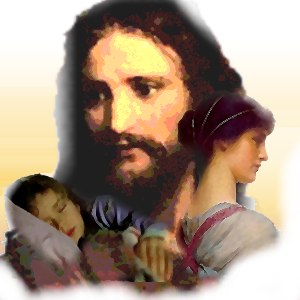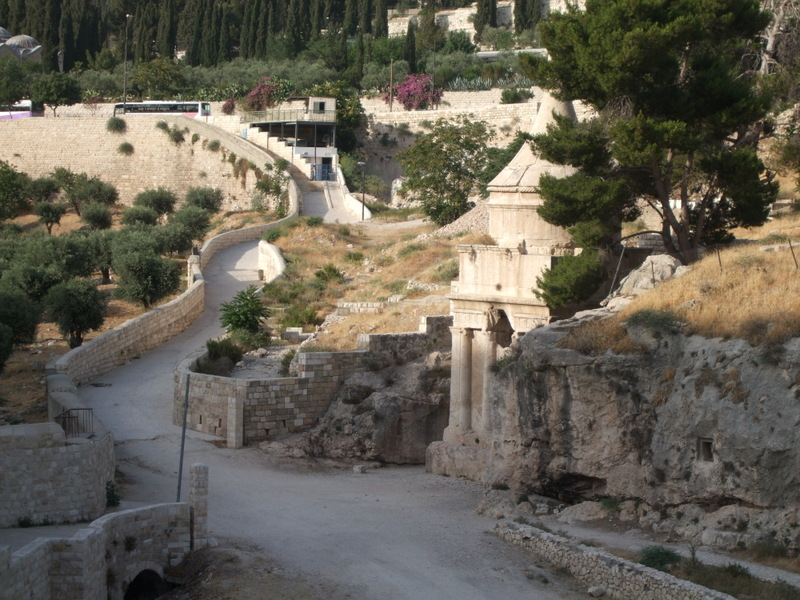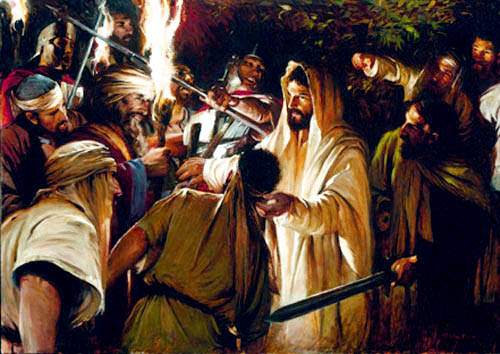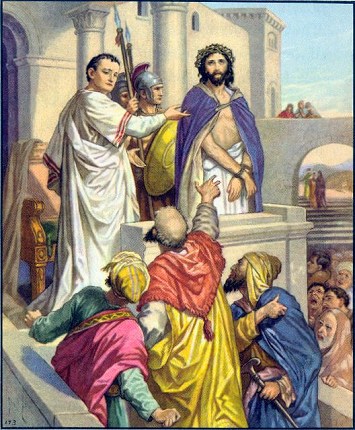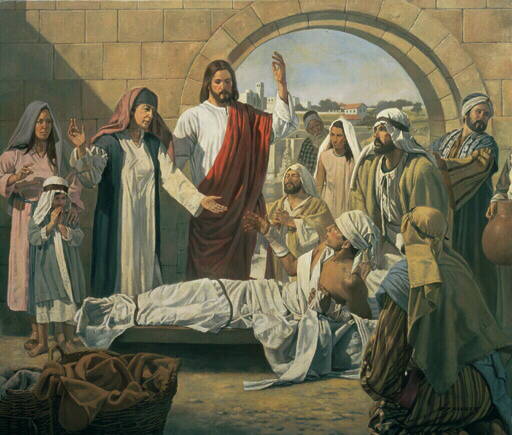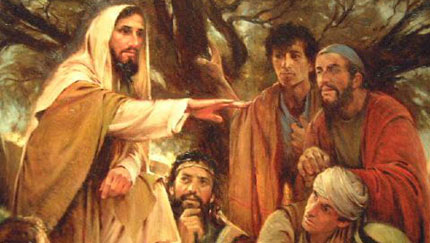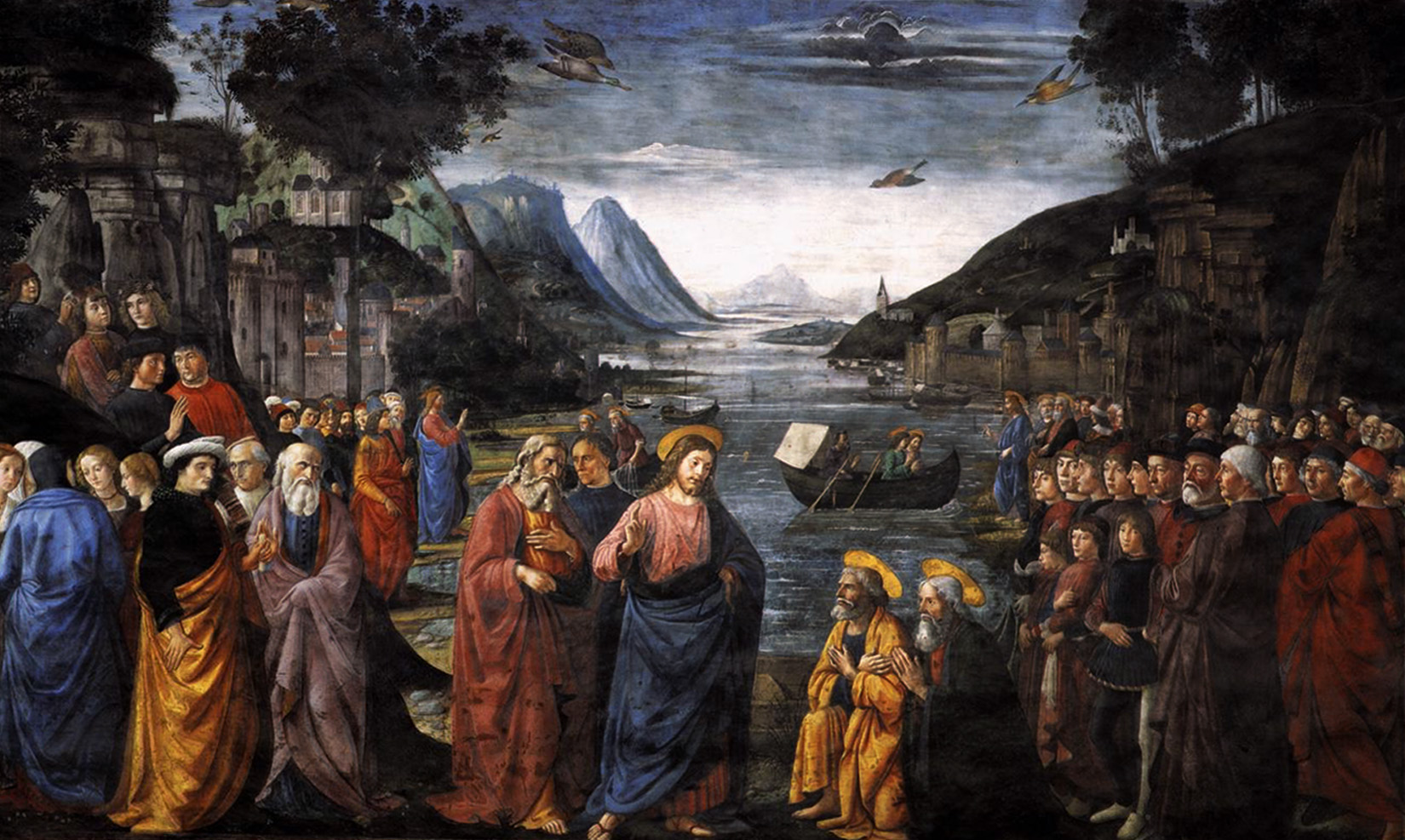Jesus Christ is The Messiah Part 4

LIFE OF JESUS CHRIST, OVERVIEW #4
Name meaning “savior” or “Jehovah [Yahweh] is
salvation” given to the Messiah.
KJV translation of Joshua, son of Nun, in Acts 7:45 and Hebrews 4:8.
Jewish Christian, surnamed Justus, who sent his greetings to the believers at
Colosse in the salutation of Paul’s Letter to the Colossians (Colossians 4:11).
Jesus Christ is the Messiah
There are many pages on “Jesus Christ” and I pray that many will see that “JESUS CHRIST” did exist and He always has and
always will. It is a crying shame that those which do not believe will end up not seeing His Glorious Face when He comes back to get His Church and those
whom believe in Him.
I have as you have noticed, if you have been viewing the website, I love pictures to help visualize what is being said, which helps bring the verses to life. So please be patient as the pages load!
|
SERMON ON THE MOUNT The Gospel of Matthew presents a substantial sample of Jesus’ teachings commonly called the Sermon on the Mount (Matthew 5:1-7:29). Some of the same material occurs in Luke in a different context and different arrangement. It is possible that Jesus often repeated his teachings on different occasions and withdifferent combinations. Matthew’s record of the Sermon on the Mount presents an impressive body of teaching, mainly focusing on morals. Jesus upholds the Law and, at the same time, goes beyond it. The beginning of this sermon has been called the Beatitudes (5:3-12). |
|
Throughout the Gospels there are records of miracles involving Jesus healing people. There are more of these miracles than any other type. A section in Matthew is devoted to a sequence of healings: (Matthew 8:1-9:34), a leper, a centurion’s servant, Peter’s mother-in-law, a demon-possessed person, a paralyzed person, a woman with a hemorrhage, blind men, and a man who was mute. In addition, Jairus’ daughter was raised from the dead. This concentration of healings focuses on Jesus as a miracle worker, but throughout the Gospels there is no suggestion that Jesus healed by magical means. In some cases an individual’s faith was acknowledged (8:10; 9:22) In at least one incident, the healing was accompanied by an announcement of the forgiveness of the sins of the one healed (9:2; Mark 2:5). This shows that Jesus considered a person’s spiritual needs to be of greater consequence than the physical problems. Jesus gives us an example to follow in how to truly help and bless people by meeting their spiritual needs. At that time, people held a widespread belief in the powerful influence of evil spirits over human lives. Jesus is seen exercising his power of exorcism over demons. Jesus’ ministry was set in an atmosphere of spiritual conflict, so the confrontations between the forces of darkness and the Light of the World were to be expected. Those who explain away these cases of demon-possession in psychiatric terms miss this key feature of Jesus’ ministry. Each time he exorcised a demon, he was demonstrating a victory, which reached its most dramatic expression in his victory over death at his resurrection. In addition to the healing miracles in this early section, one nature miracle is recorded, that of the stilling of the storm (Matthew< 8:23-27; Mark 4:35-41; Luke 8:22-25). This miracle focused both on the lack of faith in the disciples and the mysterious |
|
JESUS AND HIS CONTEMPORARIES In the early stages of his ministry, Jesus was very popular with the ordinary people. There are several notices to this effect (Matthew 4:23-25; Mark 3:7-8). This popularity showed no appreciation of the spiritual purpose of Jesus’ mission (Luke 13:17). Nevertheless, it stands in stark contrast to the nit-picking opposition of the religious leaders, who even plotted to kill Jesus in the early period of his ministry (Mark 3:6). Jesus and the religious leaders often clashed over the observance of the Sabbath (Matthew 12:1-14; Luke 13:10-17; John 5:9-18). Jesus adopted a more human-centered view than the strict interpretation of some other religious leaders—as in the instances when he was criticized for healing on the Sabbath even though the Jewish law allowed the rescuing of trapped animals on the Sabbath (Matthew 12:11; Luke 13:15). To the Pharisees, Jesus was a lawbreaker. They feared that it would undermine their authority if Jesus’ teaching were permitted to influence popular opinion. |
|
PREPARING THE TWELVE The synoptic Gospels supply lists of the names of the twelve apostles (Matthew 10:2-4; Mark 3:16-19; Luke 6:14-16). Both Matthew and Mark name them in the context of their exercising authority over evil spirits, showing that these men were being called to enter the same spiritual conflict as Jesus. The synoptic Gospels also give details of the instructions Jesus gave to these disciples before sending them to minister in Israel (Matthew 10:5-42; Mark 6:7-13; Luke 9:1-6). Matthew included material that appears in a different context in Mark and Luke, but he still shows the concern of Jesus to prepare his disciples for their future work. They were to proclaim the kingdom as he had done, but they were not to expect that all would respond to it. They were warned about coming hostility and even persecution. It is important to note that Jesus warned his disciples against burdening themselves with material possessions. Although the instructions given related immediately to a tour of ministry, he was laying the foundation for the future work of the church. |
|
JESUS AND JOHN THE BAPTIST For a while, there were preaching and baptisms by both John the Baptist with his followers and Jesus with his disciples (John 4:1-2). After John the Baptist was imprisoned by Herod because of his condemnation of Herod’s marriage to Herodias, his brother’s wife (Matthew 14:3-4), John began to have doubts about Jesus (11:1-19; Luke 7:18-35). He may have been expecting Jesus, if he really was the Messiah, to come to his rescue. When John sent his disciples to Jesus to express his doubts, Jesus took the opportunity to tell the crowds of the greatness of John the Baptist. He said there was no human that was greater than John. |
|
VARIOUS CONTROVERSIES Jesus did not hesitate to confront others on issues that involved moral or religious questions. John’s Gospel recorded a controversy over the keeping of the Sabbath that arose when a lame man was healed on that day (John 5:1-18). It shows once again that the law of the Sabbath was regarded by the Pharisees as of greater importance than concern for the physical welfare of the lame man. This was typical of the Jewish approach and led at once to a persecuting attitude toward Jesus, particularly because he claimed to be doing the work of God. A similar conflict arose after Jesus’ disciples had plucked grain in the fields on the Sabbath day (Matthew 12:1-8). The Pharisees assumed that this act was work and saw it as a reason enough to plot to destroy Jesus. After this event, he healed a paralyzed man on the same Sabbath day (12:9-14). The Jewish leaders clearly regarded him as a direct threat to their position among the people. The rising opposition did not discourage Jesus from further healings (Matthew 12:15-32), which Matthew shows as the fulfillment of Scripture. But when Jesus healed a blind and mute demon-possessed man, the Pharisees charged him with casting out demons by Beelzebub, the prince of the demons. Jesus told them that to blaspheme the Holy Spirit was an unforgivable sin. This incident not only brings out the perversity of the> religious leaders but also shows that the ministry of Jesus was under the direct control of the Spirit. Other notable miracles were the healing of the centurion’s servant, as recorded by Luke (Luke 7:1-10), and the raising from the dead of the widow’s son at Nain The former of these is notable because of the remarkable faith of a Gentile. Another example of the Pharisees’ criticism was when Jesus attended a meal in Simon the Pharisee’s house (Luke 7:36-50). His host had not provided for the usual courtesies toward guests and yet was critical of Jesus for allowing an immoral woman to wash his feet with tears, dry them with her hair, and anoint them with ointment. There is no doubt that most of Simon’s colleagues would have shared his reaction, but Jesus did not stop the woman because he knew she was motivated by love. He told Simon a parable to press home his point. John records two visits by Jesus to Jerusalem. These are difficult to date, but they probably occurred during the early period of the ministry. He attended the Feast of Tabernacles (John 7:2) and the Feast of Dedication (10:22). At these times, Jesus taught in the temple area and debated with the religious leaders. The chief priests became alarmed at his presence and sent officers to arrest him (7:32). They were unable to do so; instead, they themselves were captivated by his teachings. More discussions with the Jewish leaders followed. They charged Jesus with being demon-possessed (8:48). Both in this case and in the event of the healing of the blind man (9), the hostility of the Jewish leaders toward Jesus is clear. When Jesus spoke of himself as the Shepherd, his teaching again raised the anger of his Jewish hearers, who took up stones to kill him (10:31). |
|
TEACHING IN PARABLES Matthew’s Gospel gives a sample of a sermon by Jesus (Matthew 5:1-7:29), but Jesus more often spoke in parables. Matthew collected into a group some of the parables that concern the theme of the kingdom (13). Luke tends to preserve parables ofa different kind that are not specially linked to the kingdom. Mark has the least number of parables among the synoptic Gospels, but his writing shows little interest in Jesus as a teacher. John does not relate any parables, although he does preserve two allegories—the Sheepfold and the Vine—which could be regarded as extended parables. The parable was a favorite teaching form of Jesus. Jesus used parables even in the middle of his more formal sermons. The parable was valuable because everyone can relate to a story and still be challenged. Jesus did not speak in parables in order to obscure his meaning. This would be contrary to all that he aimed to do through his work and teaching. |
|
In Nazareth, there was a striking lack of response to the ministry of Jesus. The people of his hometown proved so hostile that he could perform very few miracles there (Matthew 13:53-58; Mark 6:1-6). This incident is important because it shows that faith was especially necessary for people to receive his healing miracles. The one miracle performed by Jesus that all four Gospels describe is the feeding of the 5,000 (Matthew 14:13-21; Mark 6:30-44; Luke 9:10-17; John 6:1-15). This occasion shows the great popularity of Jesus at this stage of his ministry. It also reveals that he was mindful ofthe physical needs of people. After this miracle, some wanted to make Jesus king. This casts considerable light on their real motives.
This style of Many have sought to rationalize the event by supposing that Jesus was really walking on the shore, and that the disciples did not realize this in the haze. But this miracle is no more extraordinary than the massive multiplication of loaves and fishes, nor is it inconceivable if the miracle worker was all that he claimed to be. It has been said that Jesus was either telling the truth, lying incessantly, or was criminally insane. These are the three options—with two and three being a direct contradiction to everything else we know about Christ. |
|
Jesus spent a brief time in the region of Tyre and Sidon, where he performed further healings and made it clear that his main mission was to the house of Israel (Matthew 15:21-28). Hethen moved on to Caesarea Philippi; this was the turning point of his ministry (16:13-20; Mark 8:27-38; Luke 9:18-27). It was there that Jesus asked his disciples: “Who do people say the Son of Man is?” This caused Peter to confess: “You are the Christ, the Son of the living God.” This impressive confession led Jesus to promise that he would build his church on “this rock.” There has been much discussion about the meaning of this saying. It is open to some doubt whether Jesus intended to build his church on Peter, on his confession, or on Peter’s making the confession. Historically, Peter was the instrument God used for the entrance into the church of both Jews and Gentiles (Acts 2; 10). There is no doubt about Jesus’ intention to found a church, since the word occurs again in Matthew 18:17. Despite the glorious revelation of Jesus on this occasion, he took it as an opportunity to begin to inform his disciples of his death and resurrection (16:21-23). This revelation of Jesus was considerably reinforced by the event known as the Transfiguration, when Jesus was changed in appearance in the presence of three of his disciples (Matthew 17:1-8). It was natural for them to want to keep this glorious vision of Jesus for themselves, but the vision vanished as rapidly as it came. Its purpose was evidently to show the three leading disciples something of the nature of Jesus, which was hidden by his normal human form. A further feature of the vision was the appearance with Jesus of Moses and Elijah, representatives of the Law and the Prophets. After the Transfiguration, Jesus made two predictions concerning his death. These announcements were confusing to the disciples. In Matthew 16, when Jesus mentioned his death, Peter attempted to rebuke Jesus and was rebuked by Jesus in kind. When Jesus mentioned his death again, in 17, Matthew noted that the disciples were greatly distressed (17:23), while Mark and Luke mentioned the disciples’ lack of understanding (Mark 9:32; Luke 9:45). This incident illustrates the attitude of Jesus toward the authorities and practical responsibilities. He paid the tax, although he did not acknowledge any obligation to do so. The method of payment was extraordinary, for it involved the miracle of the coin in thefish. But the greater importance of the incident is Jesus’ independence from the Jewish law. Luke devotes more than half his Gospel to the period that begins with Jesus leaving Galilee and ends with his death and resurrection in Jerusalem. In this section of his Gospel, Luke introduces a great deal of material that does not occur elsewhere. We can do no more than summarize some of the more striking items that throw light on the life of Jesus. In addition to the mission of the Twelve, Luke records the mission of the Seventy (or Seventy-two—Luke 10:17-20). Luke records special parables in this section like the Good Samaritan (10:29-37), the lost sheep (15:3-7), the lost coin (15:8-10), and the prodigal son (15:11-32). As Jesus moved toward Jerusalem, he was concerned with developing the spiritual life of his disciples. He was mindful of the fact that he would not be with them long and wished to prepare them for the future. He taught them about prayer (11:1-13), the Father’s care for them (12:13-34), and preparation for the coming of the Son of Man (12:35-56). |
|
ON THE WAY TO JERUSALEM On the approach to Jerusalem, Jesus visited both Jericho and Bethany. At Jericho he healed Bartimaeus (Luke 18:35-43) and had a fruitful encounter with Zacchaeus, who reformed his ways as a tax collector (19:1-10). Bethany was the home of Mary, Martha, and their brother, Lazarus, whom Jesus had raised from the dead (John 11). Jesus spent his remaining days in Jerusalem but returned each night to stay at Simon the Leper’s house in Bethany in the presence of those who loved him (Matthew 26:6). It was there that a woman anointed his body with costly ointment. This was a controversial and prophetic act preparing Jesus for his burial (26:6-13). |
|
All four Gospels relate the entry of Jesus into Jerusalem (Matthew 21:1-11; Mark 11:1-10; Luke 19:29-38; John 12:12-15). At this time, crowds greeted Jesus and praised him as their king. This welcome stands in stark contrast with the crowd’s later cry for his death. In fact, it was the second crowd that was doing God’s bidding, since Jesus had not come to Jerusalem to reign but to die. The synoptic Gospels place the cleansing of the temple as the first main event following Jesus’ entry into the city (Matthew 21:12-13; Mark 11:15-17; Luke 19:45-46). The clouds of opposition had been thickening, but the audacity of Jesus in clearing out the money-changers from the temple area was too much for the authorities (Mark 11:18; Luke 19:47). The crucifixion loomed closer. Further controversies developed between Jesus and the Pharisees and Sadducees (Matthew 21:23-22:45). In several cases, trick questions were posed in order to trap Jesus, but with consummate skill he turned their questions against them. The opposition eventually reached the point where they dared not ask him any more questions (22:46). Nearing his final hour, Jesus took the opportunity to instruct his disciples about future events, especially the end of the world. He reiterated the certainty of his return and mentioned various signs that would precede that coming (Matthew 24-25; Mark 13; Luke 21). The purpose of this teaching was to provide a challenge to the disciples to be watchful (Matthew 25:13) and diligent (25:14-30). This section prepares the way for the events of the arrest, the trial, the scourging, and crucifixion that followed soon after. But first we must note the importance of the Lord’s Supper. When Jesus sat at the table with his disciples on the night before he died, he wished to give them a picture of his death’s significance (Matthew 26:26-30; Mark 14:22-25; Luke22:19-20; 1 Corinthians 11:23-26). The use of the bread and wine for this purpose was a happy choice because they were basic elements in everyday life. Through this symbolic significance Jesus gave an interpretation of his approaching death—his body broken and his blood poured out for others. It was necessary for Jesus to provide this reminder that his sacrificial death would seal a completely new covenant. Each time we celebrate communion, we help prevent the church from losing sight of the centrality of the cross. John’s Gospel does not tell the story of the Last Supper. Nevertheless, it does record a significant act in which Jesus washed the feet of the disciples as an example of humility (John 13:1-20). He impressed on the disciples the principle of service to others. John follows this display of humility with a series of teachings Jesus gave on the eve of the Passion (chapters 14-16). All the Gospel writers refer in advance to the betrayal by Judas (Matthew 26:21-25; Mark 14:18-21; Luke 22:21-23; John 13:21-30), which prepares readers for the final stages of Jesus journey to the cross.
THE BETRAYAL AND ARREST The various outbursts of popular support were soon over and the determined opposition seemed to resume control. In John’s Gospel, the sense of approaching climax is expressed in terms of “his hour” (John 13:1). When this at length comes, the betrayal and arrest are seen as part of a larger plan. From the upper room where the Last Supper was eaten, Jesus went straight to the Garden of Gethsemane (Matthew 26:36-46; Mark 14:32-42; Luke 22:40-46), where he prayed to his Father with deep intensity and agony. It cost Jesus to identify himself with man’s need. He prayed for the cup of suffering to pass from him, but at the same time he submitted to the Father’s will. The three disciples he took with him all fell asleep, while one of his other disciples, having betrayed his master, appeared at the gates at the head of the group who had come to arrest him. At the moment of confrontation with Judas, Jesus exhibited an amazing dignity when he addressed the betrayer as his “friend” (Matthew 26:50). He offered no resistance when he was arrested and chided the crowd of people for their swords and clubs (26:55).
THE TRIAL Jesus was first taken to the house of Annas, one of the high priests, for a preliminary examination (John 18:13). During his trial, he was scorned by his enemies, and one of his disciples, Peter, denied him three times (Matthew 26:69-75, Mark 14:66-72; Luke 22:54-62; John 18:15-27), as Jesus predicted he would (Matthew 26:34; Mark 14:30; John 13:38). The official trial before the Sanhedrin was presided over by Caiaphas, who was puzzled when Jesus at first refused to speak. At length Jesus predicted that the Son of Man would come on the clouds of heaven; this was enough to make the high priest charge him with blasphemy (Mark 14:62-64). Although he was spat upon and his face was struck, Jesus remained calm and dignified. He showed how much greater he was than those who were treating him with contempt. The further examinations before Pilate (Matthew 27:1-2; Mark 15:1; Luke 23:1; Again Jesus did not answer when asked about the charges before either Pilate (Matthew 27:14) or Herod (Luke 23:9). He remained majestically silent, except to make a comment to Pilate about the true nature of his kingship (John 18:33-38). The pathetic governor declared Jesus innocent, offered the crowds the release of either Jesus or Barabbas, and then publicly disclaimed responsibility by washing his hands. Pilate then had Jesus scourged and handed him over to be crucified.
Only John’s Gospel tells of the work of Jesus in Judea following his baptism. It first describes his calling of two disciples, John and Andrew (John 1:35-39). This event is set against the background of John the Baptist’s announcement of Jesus as the Lamb of God who was to take away the sin of the world (1:29). Three others soon joined these first two disciples: Peter, Philip, and Nathanael (1:41-51). These five formed part of the nucleus of Jesus’ followers who came to be known as the Twelve. One feature of John’s account is the early recognition by the disciples of Jesus as Messiah (1:41) and Son of God (1:49). Soon after Jesus began his ministry in Jerusalem, John relates an incident at Cana in Galilee in which water was turned into wine (John 2:1-10). This event is important in John’s account because it is the first of the “signs” that he records (2:11). He saw Jesus’ miracles as signs of the truth of the Gospel rather than as mere wonders. John sets two incidents at Jerusalem in this initial period. The first is the cleansing of the temple (2:13-16). Matthew, Mark, and Luke all place this event just before Jesus’ trial, but John places it at this early stage. The moral intention ofJesus’ work is seen in his driving out the money-changers who were inappropriately profiting from worshipers. This was apparentlyacceptable in Judaism but was unacceptable to Jesus. The other Gospel writers imply that this authoritative act was the event that sparkedthe final hostility of his opponents. John tells the story for a theological reason; to him, the cleansing of the temple was a parabletelling of what Jesus had come to do. The other incident in Jerusalem is the meeting between Jesus and Nicodemus (3). Nicodemus was closely associated with Judaism, yet he was also searching for truth. He was unable to understand, however, thespiritual truth about being born again through the Spirit. Christians receive a new start in life—as if they had been born again. Their spiritual rebirth marks the moment they accept Jesus Christ as Lord and Savior and receive the Holy Spirit John’s story then movesfrom Judea to Samaria and the story of the Samaritan woman at the well (John 4:1-42). Jesus used her physical thirst to point to her deeper spiritual thirst. She realized that Jesus had something to offer her that shehad not previously known. As a result of this woman’s experience and testimony, many of the Samaritan people came to believe in Jesus as the Savior of the world (4:42).
Almost all the information on this period is found in Matthew, Mark, and Luke—referred to as thesynoptic Gospels. These may be conveniently divided into three sections. The first briefly outlines the events leading up to the choosing of the Twelve; the second deals with Jesus’ withdrawal from northern Galilee; and the third deals with his departure for Jerusalem. While the synoptic Gospels concentrate exclusively on the events in Galilee, John’s account indicates that there were some visits by Jesus to Jerusalem during this period. Also, John records another incident at Cana, where the son of a Capernaum official was healed. This is noted as the second of Jesus’ signs (John 4:54). It is chiefly important because of the extraordinary faith of the father, who was prepared to take Jesus at his word.
In the synoptic Gospels, there is an account of the initial call to four of the disciples to leave their fishing boats and to become fishers of men (Matthew 4:18-22; Mark 1:16-20; Luke 5:1-11). They had already met Jesus and must have had some idea what was involved in following him. Jesus did not at this time appoint them to be apostles, but this call was an indispensable step toward the establishment of the Twelve as a group. Setting apart a particular number of disciples formed an important part of the ministry of Jesus. Another significant call came to Levi, otherwise known as Matthew (Matthew 9:9; Mark 2:13-14; Luke 5:27-28). As atax collector, he was of a different type from most of the other disciples. Jewish contemporaries despised him because of his One of the others, Simon the Zealot, may have belonged to a group of revolutionaries who were religious as well as political. Even a manlike Judas Iscariot was numbered among the Twelve, and he would later betray Jesus to his enemies for a small sum of money. Jesus accepted them as they were and molded them into men who later came to learn how to be totally dependent on God and the power of his Spirit. It commends moral and spiritual values. The teachings recorded in this section were radical but not in a political sense. The Sermon on the Mount may be taken as a fair sample of the kind of discourses that must have abounded in the ministry of Jesus. |
Jesus 1 Jesus 2 Jesus 3 Jesus 4 Jesus 5 Jesus 6 Jesus 7 Jesus 8 Jesus 9 Jesus 10 Jesus 11
![]()
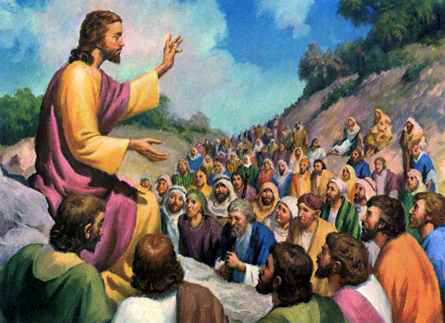

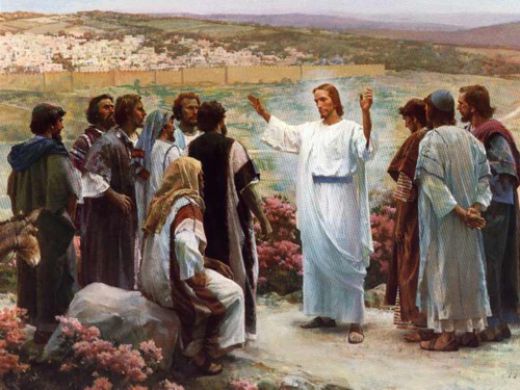
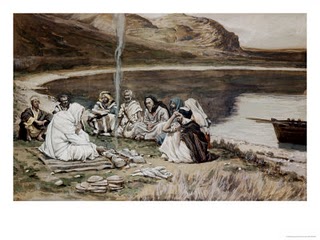

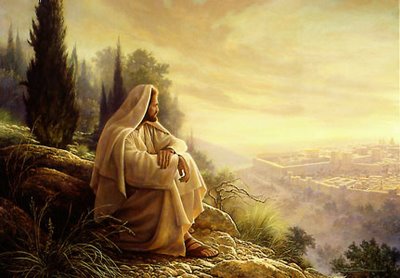


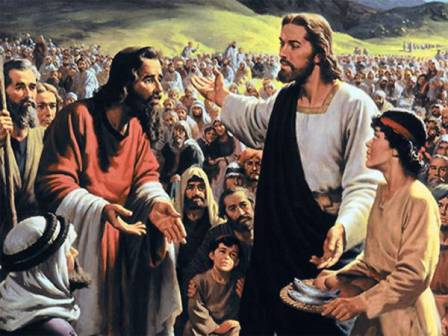
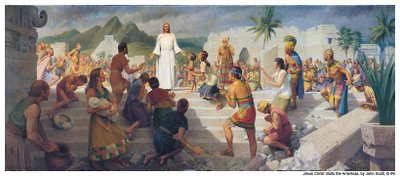 teaching is different from the
teaching is different from the 